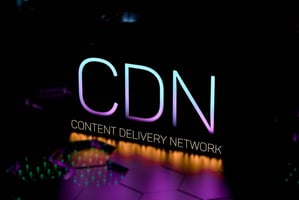In the digital realm, safeguarding multimedia content is paramount for content creators and...
Hybrid CDN Solutions: Balancing Performance and Cost
Understanding Hybrid CDN Solutions
A Hybrid CDN combines the strengths of multiple CDN providers or integrates private and public CDNs to create a more robust, reliable, and cost-effective content delivery strategy. Instead of relying on a single CDN, a hybrid approach dynamically selects the most optimal CDN based on factors like user location, network conditions, and delivery costs.
Why Consider a Hybrid CDN?
- Performance Optimization: Different CDNs have varying strengths in different regions. A hybrid solution ensures that content is always delivered via the most efficient route.
- Cost Efficiency: Balancing traffic between premium CDNs and more cost-effective options can significantly reduce expenses without compromising quality.
- Redundancy and Reliability: Utilizing multiple CDNs mitigates the risk of downtime due to a single provider's outage, ensuring higher uptime.
- Scalability: As your user base grows globally, a hybrid CDN can seamlessly scale to meet increasing demand.
The Need for Hybrid CDN Solutions
While traditional CDNs have improved content delivery, they may face limitations such as regional performance issues, single points of failure, and inflexible cost structures. Hybrid CDNs address these challenges by:
- Enhancing Global Reach: By leveraging multiple CDNs, businesses can optimize content delivery in regions where a single CDN might have limited presence.
- Improving User Experience: Dynamic routing ensures users receive content with minimal latency, reducing buffering and load times.
- Optimizing Costs: By intelligently distributing traffic, companies can use higher-cost CDNs only when necessary, balancing expenses.
Industry Insights: The Rise of Hybrid CDNs
The increasing demand for high-quality digital experiences has led to the growing adoption of hybrid CDN solutions. Key trends include:
- Customization: Businesses seek tailored solutions that align with their specific performance needs and budget constraints.
- Integration with Cloud Services: Hybrid CDNs integrate seamlessly with cloud infrastructures, enhancing delivery for dynamic and complex applications.
- AI and Automation: Advanced algorithms enable real-time decision-making for content routing, further optimizing performance and cost.
Case Study: Implementing a Hybrid CDN Strategy
Scenario: An e-commerce platform anticipates heavy traffic during a major sales event.
Challenge: Ensure a seamless shopping experience globally without incurring exorbitant CDN costs.
Solution: The company adopts a hybrid CDN approach:
- Critical Content Delivery: Utilizes a high-performance CDN for transactional data and critical assets.
- Static Content Delivery: Employs a cost-effective CDN for images, style sheets, and other static resources.
- Dynamic Routing: Implements real-time monitoring to switch traffic based on network conditions.
Result: The platform maintains high performance during peak traffic while optimizing costs, leading to increased customer satisfaction and higher sales.
Choosing the Right Hybrid CDN Solution
When selecting a hybrid CDN strategy, consider the following factors:
1. Global Network Coverage
Ensure the CDNs involved have strong performance in your target regions to minimize latency.
2. Cost Structure
Analyze the pricing models to understand how traffic distribution will impact your budget.
3. Integration Capabilities
Choose solutions that integrate smoothly with your existing infrastructure and are compatible with your technology stack.
4. Performance Metrics and Analytics
Access to real-time analytics is crucial for monitoring performance and making informed decisions.
5. Support and Reliability
Select providers with a proven track record and robust customer support to address any issues promptly.
Example: BlazingCDN offers competitive pricing starting at $5 per TB, making it an attractive option for businesses looking to optimize costs without sacrificing performance. By incorporating BlazingCDN into a hybrid strategy, companies can leverage its robust features alongside other CDNs to achieve optimal results.
Future Trends in Hybrid CDN Solutions
The landscape of content delivery is continuously evolving. Upcoming trends include:
AI-Driven Content Routing
Artificial Intelligence will play a significant role in predicting traffic patterns and optimizing routing decisions in real-time.
Edge Computing Integration
Bringing content processing closer to the end-user reduces latency and improves performance, a key focus area for future CDN development.
Real-Time Performance Analytics
Advanced analytics tools will provide deeper insights into user behavior and network performance, enabling more precise optimizations.
Embracing Hybrid CDN Solutions for Competitive Advantage
In an era where user experience is paramount, delivering content quickly and reliably is essential. Hybrid CDN solutions offer a strategic way to balance performance and cost, ensuring that businesses can meet user expectations while managing expenses effectively.
By adopting a hybrid approach, companies can:
- Enhance User Satisfaction: Reduce load times and buffering, leading to higher engagement.
- Achieve Operational Efficiency: Optimize resource utilization and reduce unnecessary expenditures.
- Increase Resilience: Minimize the risk of downtime and maintain service continuity.
Conclusion
As digital content continues to grow in importance, so does the need for efficient delivery mechanisms. Hybrid CDN solutions represent the next evolution in content delivery, combining the strengths of multiple networks to provide a powerful, flexible, and cost-effective strategy.
Ready to explore how a hybrid CDN solution can benefit your business? Consider partnering with providers like BlazingCDN to enhance your content delivery strategy.


